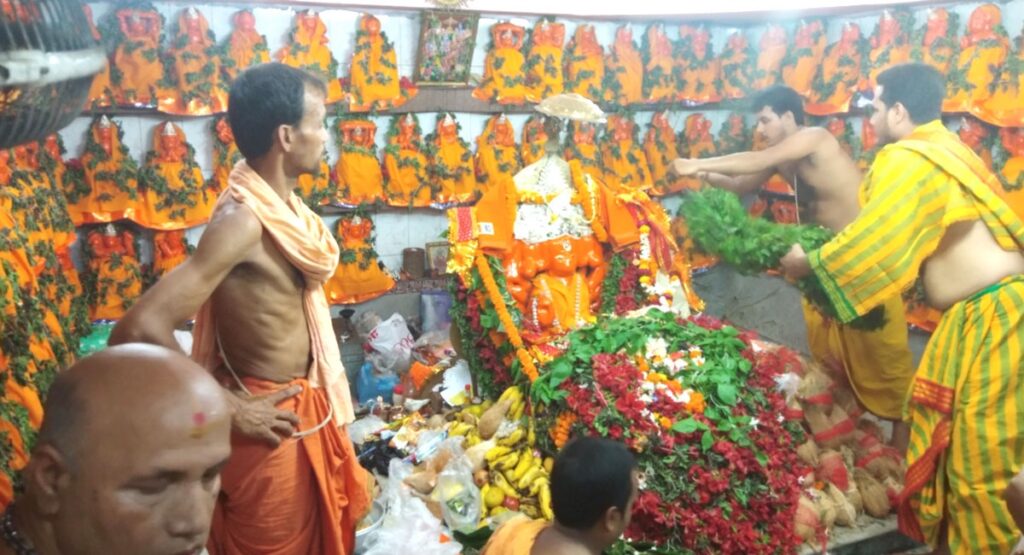In the vibrant state of Odisha, a land steeped in rich culture and traditions, the festival of Mesha Mahabishuba Sankaranti holds a special place in the hearts of its people. Also known as Pana Sankranti or Maha Vishuba Sankranti, this auspicious occasion is celebrated with great enthusiasm and joy every year on the 14th of April, marking the beginning of the traditional Odia New Year.

Mesha Mahabishuba Sankaranti is closely associated with agriculture and is dedicated to Lord Jagannath, the presiding deity of Odisha. The word ‘Mesha’ refers to the zodiac sign Aries, which marks the transition of the sun into this constellation during this time of the year. It signifies the onset of the harvest season and the arrival of spring, symbolizing new beginnings, growth, and prosperity.
You can read our another post on The Leaning Temple of Huma: A Unique Architectural Wonder
The festival is characterized by various rituals and customs that are observed by the people of Odisha. One of the highlights of Mesha Mahabishuba Sankaranti is the preparation and consumption of a special drink called ‘Pana.’ Pana is a delicious concoction made from different ingredients like yogurt, water, jaggery, fruits, and spices. It is a refreshing beverage that helps beat the scorching summer heat and is offered to deities in temples across the state.
Another significant aspect of the festival is the decoration of ‘Chita’ or ‘Rangoli’ patterns on the courtyards of houses. These intricate designs are created using rice flour, flowers, and colored powders. They are believed to bring good luck and ward off evil spirits. Many families also observe a ceremonial bath known as ‘Pana Jala,’ where they sprinkle water mixed with turmeric on each other as a gesture of purification and renewal.
Devotees throng to temples during Mesha Mahabishuba Sankaranti, especially the famous Jagannath Temple in Puri. The temple witnesses an enormous influx of pilgrims who come to seek the blessings of Lord Jagannath and partake in the festivities. Elaborate processions are carried out with the deities placed on beautifully decorated chariots, accompanied by devotional songs and dances.
Cultural programs and fairs are organized in various parts of Odisha to celebrate Mesha Mahabishuba Sankaranti. Folk dances like Ghumura, Sambalpuri, and Gotipua are performed, showcasing the rich cultural heritage of the state. People indulge in traditional games, kite flying, and exchange greetings and sweets with friends and family.
The spirit of unity and togetherness is evident during this festival as people from all walks of life come together to celebrate and rejoice. It fosters a sense of community bonding and strengthens the social fabric of Odisha.
More: Wanted to download Odishashop.com visit here
As the sun sets on Mesha Mahabishuba Sankaranti, the air resonates with the sound of laughter, merriment, and the hope of a prosperous year ahead. The festival not only marks the beginning of a new agricultural season but also serves as a reminder of the importance of embracing change and welcoming fresh opportunities.
Mesha Mahabishuba Sankaranti in Odisha is a time-honored tradition that showcases the deep-rooted cultural heritage and religious fervor of the region. It is a celebration of life, renewal, and the triumph of good over evil. As the people of Odisha come together to welcome the New Year, they do so with a renewed spirit and a sense of optimism, bidding farewell to the old and embracing the new with open arms.
Write A FAQ For Mesha Mahabishuba Sankaranti in Odisha Celebrating
What is Mesha Mahabishuba Sankaranti and how is it celebrated in Odisha?
Mesha Mahabishuba Sankaranti is a traditional festival celebrated in Odisha, India. It marks the beginning of the solar month of Mesha (Aries) and is observed as New Year’s Day by Odia people. During this festival, people participate in various rituals, perform puja (worship) to deities, and exchange greetings and gifts.
When is Mesha Mahabishuba Sankaranti celebrated in Odisha?
Mesha Mahabishuba Sankaranti is typically celebrated on the 14th or 15th of April every year. The date may vary slightly based on the Hindu lunar calendar.
What are some common rituals observed during Mesha Mahabishuba Sankaranti?
On this day, people wake up early and take a bath in holy rivers or ponds, symbolizing purification and renewal. They then visit temples and perform puja to Lord Jagannath, the presiding deity of Odisha. Offerings of fruits, sweets, and special dishes like Poda Pitha (a type of cake) are made to the deities. Many people also fly kites as a traditional part of the celebrations.
Are there any specific traditional dishes associated with Mesha Mahabishuba Sankaranti?
Yes, Poda Pitha is a special dish that is prepared and enjoyed during this festival. It is a type of baked cake made from rice, jaggery, coconut, and other ingredients. Other traditional dishes like Manda Pitha, Kakara Pitha, and various sweet delicacies are also prepared and shared among family and friends.
How do people greet and wish each other during Mesha Mahabishuba Sankaranti?
The common traditional greeting during this festival is “Naba Barsa Subha Asha” which translates to “Happy New Year.” People exchange warm wishes, blessings, and greetings with each other, expressing good health, prosperity, and happiness for the coming year.
